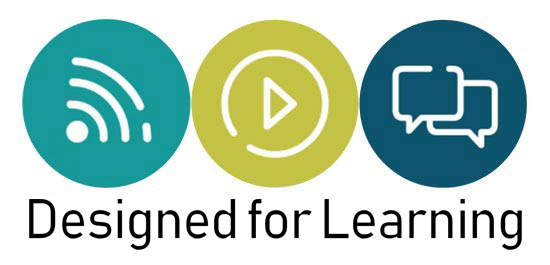18 Jun Blended Networking
![]() I attended an interesting workshop in Birmingham last week organised by BLU (Business Link University) which focussed on the development and use of peer-to-peer learning networks. BLU is a UK government funded organisation that aims to support those working in the SME support sector – primarily government and EU funded organisations that are tasked with raising the capabilities of start-ups and other small businesses. As something like 90% of companies are classified as SMEs it’s a critical area for driving economic performance but actually getting value for taxpayers cash is hard because of the sheer number of businesses which operate in this sector. Until now the support input has been largely advisory, mixed with some basic training and development activities but recent changes to the structure of publicly funded business support has resulted in a range of fresh approaches. One of these has been the realisation that small businesses often learn a lot simply by getting together and talking about their businesses with each other. Clearly business people have always networked – and networking is regularly seen as a key way to promote your business – but the idea of networking specifically to learn things is less well understood.
I attended an interesting workshop in Birmingham last week organised by BLU (Business Link University) which focussed on the development and use of peer-to-peer learning networks. BLU is a UK government funded organisation that aims to support those working in the SME support sector – primarily government and EU funded organisations that are tasked with raising the capabilities of start-ups and other small businesses. As something like 90% of companies are classified as SMEs it’s a critical area for driving economic performance but actually getting value for taxpayers cash is hard because of the sheer number of businesses which operate in this sector. Until now the support input has been largely advisory, mixed with some basic training and development activities but recent changes to the structure of publicly funded business support has resulted in a range of fresh approaches. One of these has been the realisation that small businesses often learn a lot simply by getting together and talking about their businesses with each other. Clearly business people have always networked – and networking is regularly seen as a key way to promote your business – but the idea of networking specifically to learn things is less well understood.
The workshop was led by a mix of Business Link people and BLU Associates (contracted to work with BLU on various projects) and was heaviliy participative – to the extent that it was hard work for all of us poor participants. That’s the secret of good facilitation – you get to spend as little time up-front as possible. And as a refreshing change not a single PowerPoint slide to be seen – that felt quite weird actually – when I first selected a seat I tried to work out the data projector and screen arrangement. Paul Jackson led the event supported by Jim McLaughlin and others.
Though the event looked at various ways in which networks could both promote and support peer-to-peer learning I was primarily interested in how offline and online networks could be used to support each other. I therefore selected a couple of sessions which looked specifically at using online learning networks. In those sessions we touched on some of the following issues:
Cultural dimension – it’s hard to get those who aren’t into social computing onto a PC – networking to many people is about meeting face-to-face. There are other cultural issues at play as well – for example no women attended either of the online sessions!
Chicken and egg – do you need to meet face-to-face before you can participate in an online network or can online networks act as a catalyst for face-to-face networks? We shared examples of each.
Give and take – learning networks need to balance give and take. Frequently people expect to take and aren’t prepared to give. Successful networks need to manage this expectational mismatch.
During our discussions we decided that a balance between online and offline was probably the most sustainable approach – and we coined the phrase blended networking – which borrows from the language of e-learning, where blended learning is used to indicate learning that balances both online and offline elements.
A search on Google reveals only 93 pages for the phrase blended networking and none of those sites appear to use the term in the context described above. I’ve created an entry in Wikipedia to celebrate this historic event!
ExLink: BLU Leadership






Syhkownem
Posted at 01:07h, 23 Februaryzoloft and ibuprofen
KthUnuct
Posted at 05:49h, 23 Februarydoes furosemide lower blood sugar
XthfAvape
Posted at 19:27h, 23 Februarywhen to take lisinopril morning or night
Ctngrons
Posted at 21:12h, 23 Februarycan i drink on flagyl
Sheownem
Posted at 03:57h, 25 Februaryglucophage bipolar
KtbUnuct
Posted at 10:13h, 25 Februaryis furosemide the same as lasix
XjeAvape
Posted at 22:23h, 25 Februarygaba vs gabapentin
Ctjgrons
Posted at 16:11h, 26 Februaryzithromax dosage for chlamydia
Smgownem
Posted at 02:10h, 27 Februarydoes alcohol kill amoxicillin
KethUnuct
Posted at 17:32h, 27 Februarygabapentin for depression
XjjeAvape
Posted at 23:47h, 27 Februarycephalexin price
Cnntgrons
Posted at 08:55h, 28 Februaryescitalopram insomnia
Snduownem
Posted at 22:47h, 28 Februaryciprofloxacin otic drops
XmtfAvape
Posted at 04:54h, 01 Marchalcohol and cephalexin
Crmmgrons
Posted at 06:04h, 04 Marchbactrim for strep
Srngownem
Posted at 12:20h, 04 Marchamoxicillin kidney infection
KmehUnuct
Posted at 12:54h, 04 Marchbactrim cost
KtncxUnuct
Posted at 09:32h, 07 Marchdoes gabapentin make you gain weight
Crndgrons
Posted at 00:42h, 08 Marchescitalopram dosage amounts
KmevUnuct
Posted at 19:45h, 11 Marchside effects of reducing citalopram from 20mg to 10mg
Srthvownem
Posted at 00:32h, 12 Marchcozaar vs diovan
Crhcgrons
Posted at 12:46h, 12 Marchddavp and vwd
XnrAvape
Posted at 20:55h, 12 Marchdepakote withdrawal symptoms
Srthvownem
Posted at 03:30h, 16 Marchis cozaar a beta blocker
KmevUnuct
Posted at 10:26h, 16 Marchlong term use of citalopram
XnrAvape
Posted at 21:26h, 16 Marchdepakote weight gain
Crhcgrons
Posted at 01:45h, 17 Marchddavp protocol
Stehownem
Posted at 06:13h, 19 Marchaugmentin tarkov
KxebUnuct
Posted at 16:16h, 19 Marchezetimibe classe farmacologica
XthdAvape
Posted at 22:15h, 19 Marchdiclofenac sod 75 mg uses
Cjefgrons
Posted at 08:59h, 20 Marchdiltiazem cd 240mg
Sedcownem
Posted at 06:14h, 21 Marchflomax regular dose
KxfcUnuct
Posted at 16:24h, 21 Marcheffexor sode effects
XtmfAvape
Posted at 22:13h, 21 Marchflexeril weight gain
Cjmogrons
Posted at 09:17h, 22 Marchcontrave not working anymore
Srncownem
Posted at 06:44h, 23 Marchamitriptyline 10 mg efectos secundarios
KmtfUnuct
Posted at 12:46h, 23 Marchallopurinol cause gout attack
XtenAvape
Posted at 03:29h, 25 Marcharipiprazole and autism
Ctmvgrons
Posted at 05:20h, 25 Marchlow dose aspirin during pregnancy
Srmvownem
Posted at 14:00h, 26 Marchbupropion and hair loss
KmrcUnuct
Posted at 20:08h, 26 Marchcelebrex aspirin
XssmnAvape
Posted at 13:23h, 27 Marchbaclofen dose for spasticity
Csxxgrons
Posted at 15:29h, 27 Marchamoxicillin augmentin
Sxxeownem
Posted at 23:10h, 28 Marchbuspirone and acne
KmhhUnuct
Posted at 06:24h, 29 Marchcelecoxib and alcohol
XncAvape
Posted at 22:27h, 29 Marchcan you take too much ashwagandha
Czzqgrons
Posted at 01:53h, 30 Marchhow long for celexa to work
Srcbownem
Posted at 09:18h, 05 Aprilabilify cost per month
KrccUnuct
Posted at 10:09h, 05 Aprilactos painonnousu
Cjuugrons
Posted at 06:12h, 06 Aprilwiki acarbose
XtvcAvape
Posted at 09:20h, 06 Aprilliraglutide and semaglutide
Sasfownem
Posted at 04:41h, 09 Aprilrepaglinide sulfa allergy
KxeeUnuct
Posted at 09:30h, 09 Aprilmirtazapine remeron
Czzugrons
Posted at 04:10h, 10 Aprilprotonix uses
XmhAvape
Posted at 04:44h, 10 Aprilrobaxin half life
Awsxownem
Posted at 13:53h, 15 Aprilsitagliptin pronunciation
ZefbUnuct
Posted at 14:13h, 15 Aprilsynthroid sintomas
BthjAvape
Posted at 11:59h, 16 Aprilyellow spironolactone
Ayybownem
Posted at 06:33h, 18 Aprilvoltaren gel dosage
ZolkUnuct
Posted at 12:31h, 18 Apriltamsulosin hydrochloride wiki